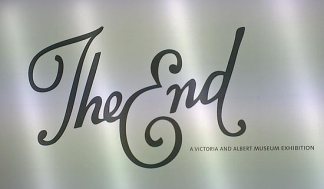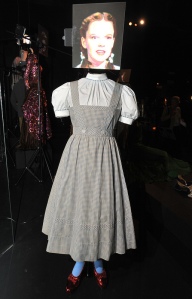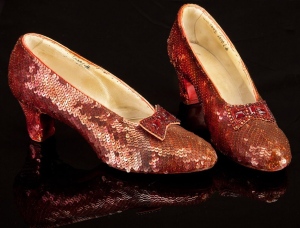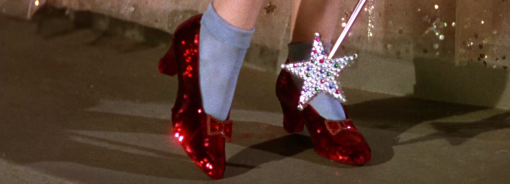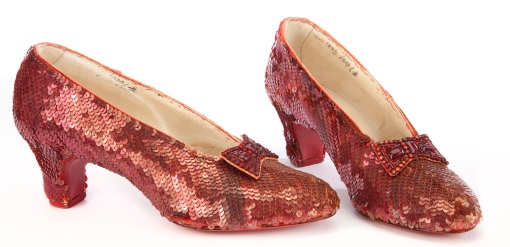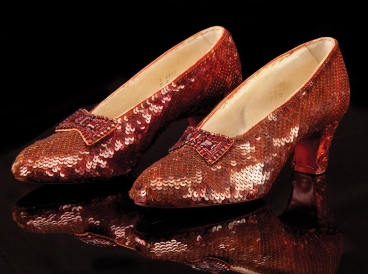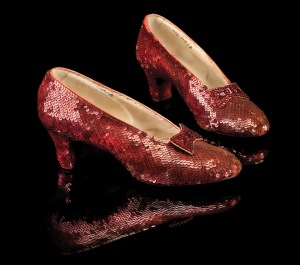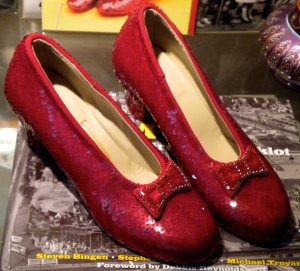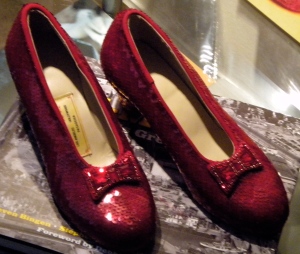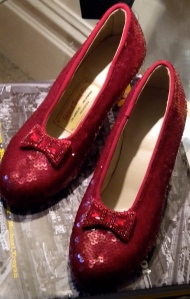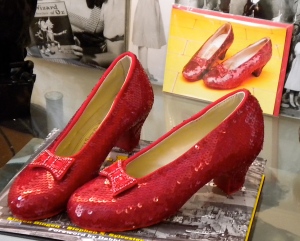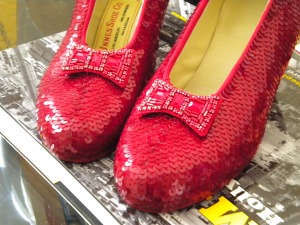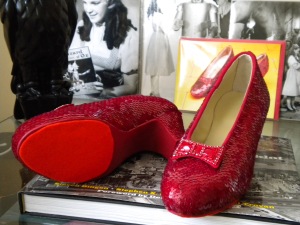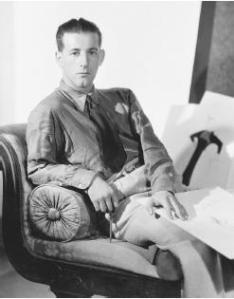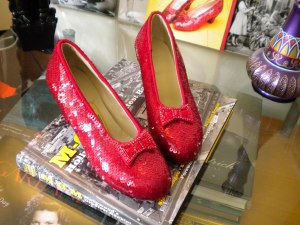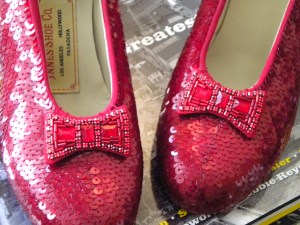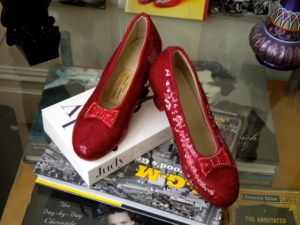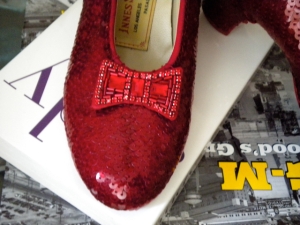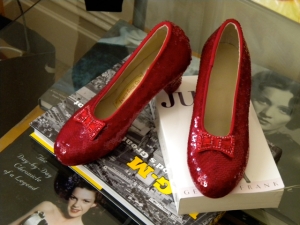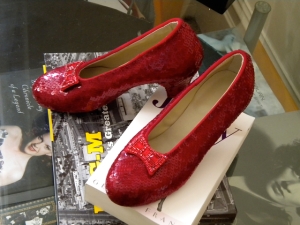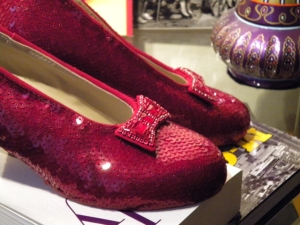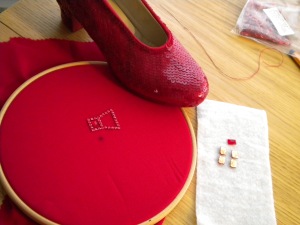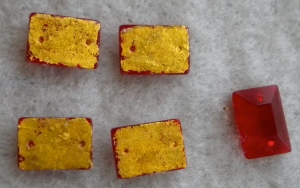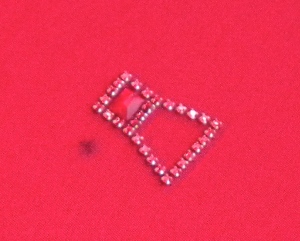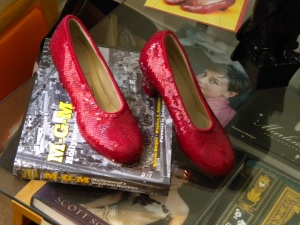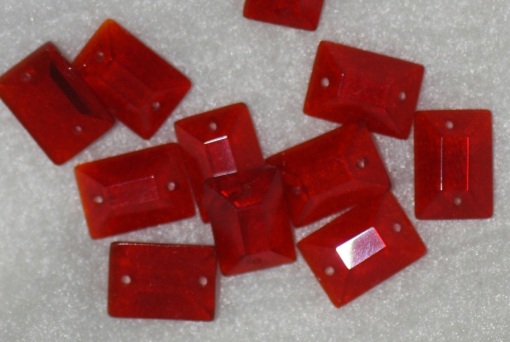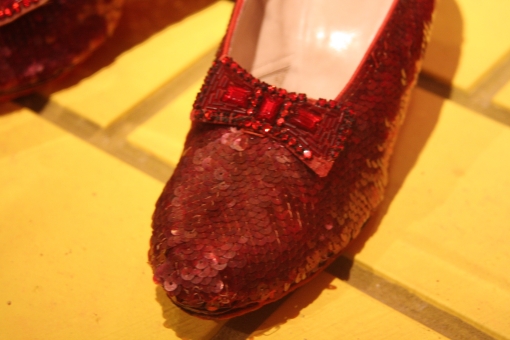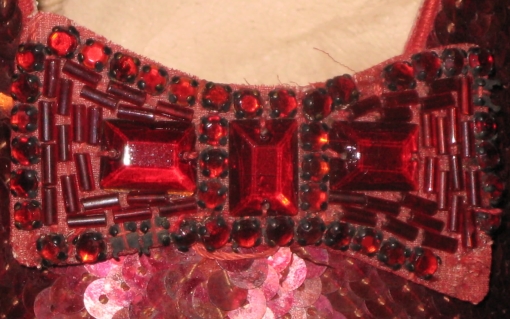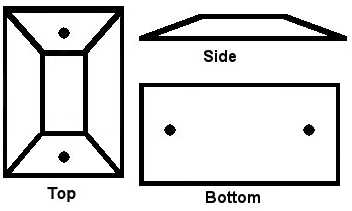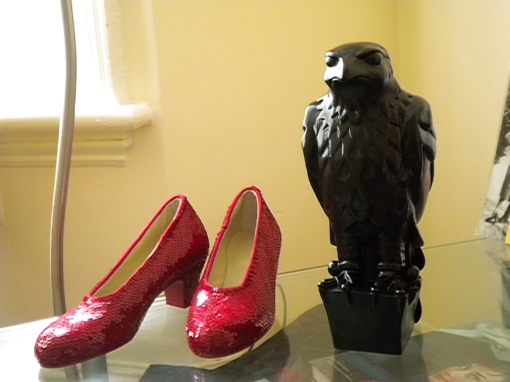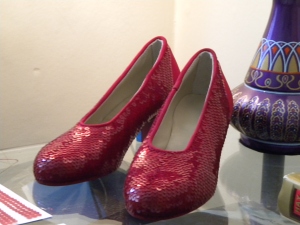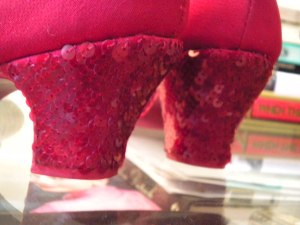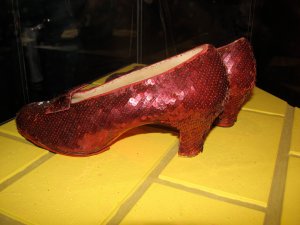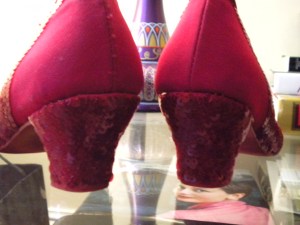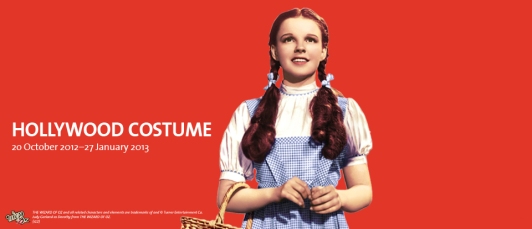
This past Saturday, after well over a year of anticipation, I had the pleasure to experience the Victoria and Albert Museum’s new exhibition, ‘Hollywood Costume.’ I was far from disappointed.
The exhibition, with over 130 costumes on display is, simply, a beautiful love letter to Hollywood, and the role of the costume designer in its history. The exhibition is comprised of three sections, or ‘acts.’ ‘Deconstruction,’ strives to examine the role of the designer in researching characters to know who they are, and how they should be presented, while ‘Dialogue,’ explains the collaborative process between the designer and director to bring the character to life. The third gallery, ‘Finale,’ is the culmination of these processes, exhibiting those costumes that have become, simply, part of the ether of popular culture.
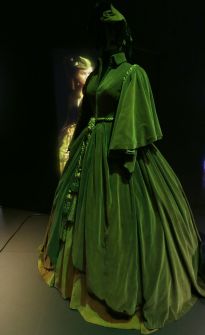
Scarlett O’Hara (Vivien Leigh) in ‘Gone with the Wind.’
Walking into the exhibition, you’re confronted by a cinema screen as wide as the exhibition room itself, showing short film clips, each focusing on a costume piece in the collection, with a sweeping score seducing you into the darkened cinematic galleries. Indiana Jones, Dorothy Gale, Mildred Piece, Scarlett O’Hara (and others) appear in quick succession. As someone absolutely enamored of film costumes (none more so than a certain pair of little red shoes), I’d been excited for this day ever since an announcement of the exhibition had appeared in the auction catalog for the sale of Debbie Reynolds collection in the summer of 2011. I thought it would be an amazing day, looking at all these fantastic works of art. But, I wasn’t prepared for what they would make me feel.
Turning the first corner into the exhibition, I was confronted by Scarlett O’Hara’s (Vivien Leigh) iconic green velvet curtain dress from Gone with the Wind, and I was instantly in tears, near sobbing. I’m, admittedly, an emotional person, but this felt like a punch to the stomach, and I surprised even myself. I expected the most memorable pieces to be in the exhibition’s final act. Seeing one of my favorite pieces right away was outright shocking. I stood there for a moment to catch my bearings, when I realized the pieces are not surrounded by glass, they are open to the viewer, which only added to all the pieces’ impact.
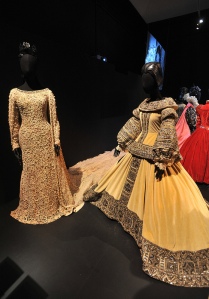
Queen Christina (Greta Garbo).
But, the first gallery holds many gems, Queen Christina (Greta Garbo), Marie Antoinette (Norma Shearer), Queen Elizabeth (Bette Davis) in The Virgin Queen, the Tramp (Charlie Chaplin) in Circus, and Lady Maria Barker (Marline Dietrich) in Angel, in a sea of more contemporary pieces.
Now, I acknowledge, every piece has a story; each is the result of a great deal of collaborative work, to discover what best suits the character, the story, and the mise-en-scène. But modern American cinema, on the whole, doesn’t speak to me in the same way Classical Hollywood does. So, I’m partial from the start.
Throughout the exhibition, rather than simply lifeless garments on forms, an effort is made to pose and display the figures in such a way to evoke the actor and character they once dressed. Also, an inventive use of screens and projections furthers the illusion of embodiment, combining the forms with theatrically-inspired lighting and an original score, giving one the sense, that you are within some of Hollywood’s most memorable films.

Scarlett O’Hara (Vivien Leigh) in ‘Gone with the Wind.’
In the second part of the exhibition, ‘Dialogue,’ interviews between three different directors (Tim Burton, Martin Scorsese, and Alfred Hitchcock) and their costume designers (Colleen Atwood, Sandy Powell, and Edith Head) play, to demonstrate the collaborative nature of bringing the characters to life. Also featured in the same gallery is a section of costumes from Meryl Streep and Robert De Niro, both of whom take a heavy hand in the creation of their respective characters. Included here were also Scarlett O’Hara’s feathered red dress, Darth Vader, Joan Crawford’s red bugle beaded gown from The Bride Wore Red, and Hedy Lamarr’s green peacock dress from DeMille’s Samson and Deliah, among several others. Included with each costume throughout the exhibition was a short explanation from the director, producer, costume designer, or actor, explaining the motivations behind each piece, offering a glimpse of its individual creation story.
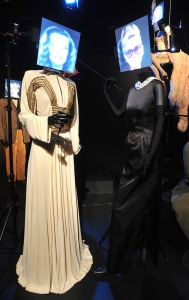
Tracy Lord (Katherine Hepburn) in ‘The Philadelphia Story and Holly Golightly (Audrey Hepburn) in ‘Breakfast at Tiffany’s.
In the third gallery, ‘Finale,’ (being me) my eyes immediately searched the room for Dorothy, and finding her, I wanted to rush by everything else just to get there. (Regardless of the fact I just viewed another of the Oz pinafores just a few weeks ago.) But, as my partner aptly said, ‘[W]e have some old friends here to visit first,’ and that surmises how many of us see these characters. As curator Deborah Landis has said, ‘No costume designer sets out to create an icon,’ but when the characters become so beloved by the public, their costumes become iconic in their own right. Costume design, as she is at pains to demonstrate throughout the exhibition, is never about the clothes. It’s about the characters and their stories, and how those stories resonate with us. In short, it’s about the magic of the movies.
As a child, I loved nothing more than to sit down with a Classical Hollywood film, and many I’m not ashamed to admit I’ve seen dozens of times. So, for me, they really did feel something like old friends and, to see the clothes many of those characters in my imagination wore, well, it touched me deeply. For those who love movies, we carry those characters, and their stories, with us, and, thankfully for us, we can visit them whenever we wish.
The collection Landis has put together, to her immense credit, couldn’t be much more impressive. Populating the last room were, a cavalcade of my favorite characters. Among them were, Eliza Dolittle and Professor Henry Higgins (Audrey Hepburn and Rex Harrison) from My Fair Lady, Tracy Lord (Katherine Hepburn) from The Philadelphia Story, Holly Golightly (Audrey Hepburn) from Breakfast at Tiffany’s,Amy Jolly (Marlene Dietrich) from Morocco, Fanny Brice from Funny Girl and Dolly Levi from Hello Dolly! (both Barbra Streisand), Rose DeWitt Bukater and Jack Dawson (Kate Winslet and Leonardo DiCaprio) from Titanic, Sugar Kane Kowalczyk from Some Like It Hot and The Girl from The Seven Year Itch (both Marilyn Monroe) and finally Dorothy Gale (Judy Garland) from The Wizard of Oz.
While the lighting made details of some garments difficult to see, and the positioning of others made a clear view impossible (this was particularly the case with the Titanic pieces), the exhibition is, without a shred of doubt, an embarrassment of riches.

Dorothy Gale’s (Judy Garland) ruby slippers, on special loan from the National Museum of American History, Smithsonian Institution.
But, for me, nothing could ever beat the very last few pieces. Turning that last corner, there sat, Dorothy’s pinafore and, nearby, in their small case, the ruby slippers (on their first international trip). Yes, I saw one of the pinafores around two weeks ago, and another pair of the slippers just under a year ago, and having studied them for years now, I really do know just about every detail of every pair in existence. But standing in front of them all over again, pointing out the tiniest details of their construction and condition, it couldn’t matter less. For these are special; they are the slippers that took Dorothy home, and standing there with them again, I’m left with the sheer magic of the film, and my love of Hollywood, and, just maybe, the desire to be part of it.
Which, isn’t that the point of the exhibition itself, anyway?
